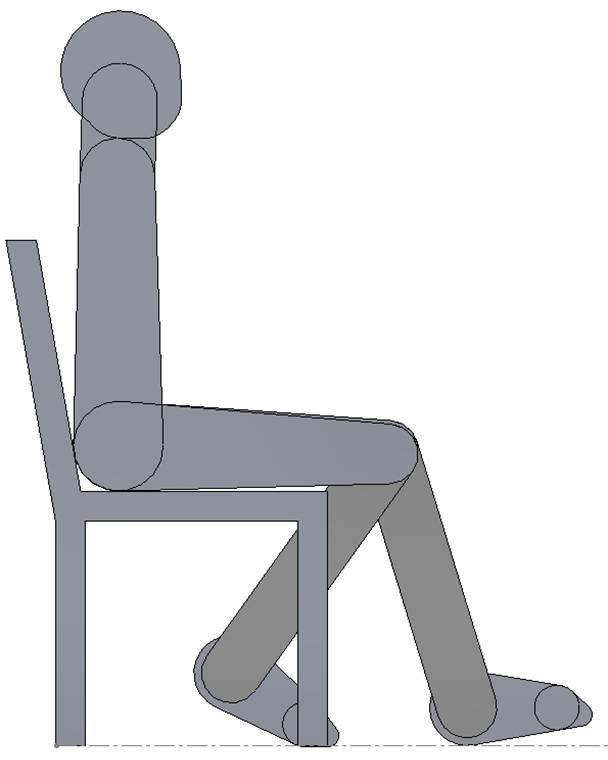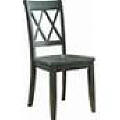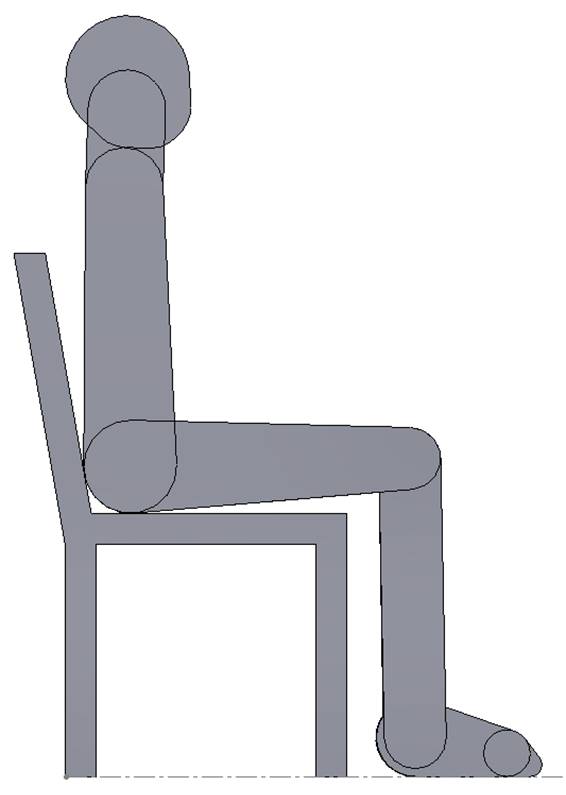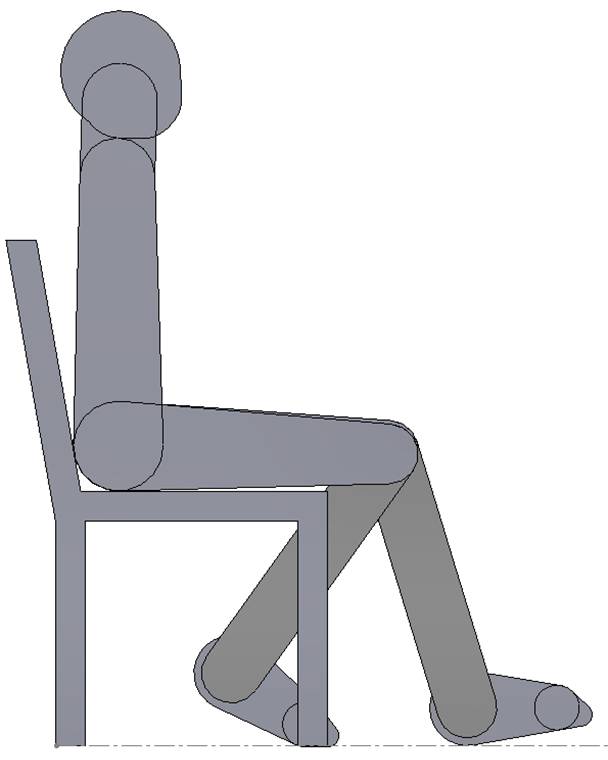Mealtime Partners, Inc.
Specializing in Assistive Dining and Drinking Equipment
January 2017 Independent Eating and Drinking Newsletter

|
January Topics:
|
||
|
Mealtime Partners Home Page Send a Comment or Suggestion |
|||
| Subscribe to Newsletters |
A New (Illustrated) Discussion of Seating and Positioning
Over the years, Mealtime Partners has published several Newsletter articles, and has given many presentations, about how someone who is eating should sit and be positioned while they eat or drink. The reason that we are so vigilant about providing information in this area is because seating and positioning has a significant impact upon how an individual chews and swallows liquids and solids, safely.
It has come to our attention that despite our best efforts in this area, people do not always understand all of the nuances of positioning the whole body to accomplish a good and safe position for eating and drinking.
The importance of this topic has become even more apparent because so many clinical articles have now been published that have investigated safety issues relating to being fed. It has been clearly shown that people who are fed by another person are at a significantly higher risk of aspiration and choking than those who feed themselves. Mealtime Partners March 2015 Newsletter provides insight into some of the research that has been conducted in this area.
Describing seating positions can be difficult despite it seeming to be quite easy and straight forward. However, words can be misunderstood or difficult to understand (refer to the article of the same topic in our April 2016 Newsletter); also, if you take photographs of a person seated in an appropriate position, the picture has extraneous things in it that can obscure what is being illustrated and can confuse the viewer. (Clothes are the primary culprit, but also the chair can obstruct the view of what is being discussed.) In an effort to circumvent this from happening, Mealtime Partners has developed a stick-like figure rendering to (hopefully) more clearly illustrate seating and positioning. This character will show up from time to time in our Newsletters and for the sake of brevity, we have named him “Joe”. For example, Figure 1 shows Joe sitting on a chair.
 |
| FIGURE 1 - Joe Sitting on a Chair |
Joe will be used to illustrate the good, the bad, and the ugly of sitting while eating and drinking. Currently Joe will be used to demonstrate issues relating to those who sit on a chair to eat. However, unless an individual is sitting in a wheelchair that was specifically designed for him, the issues described using Joe in a "standard" chair can also be applied to wheelchair users. (A custom designed wheelchair is known as complex rehab technology and the definition can be found at the NRRTS website. Those who sit in custom wheelchairs should not experience difficulties with seating and positioning as their wheelchair should hold their body in a stable position with the issues of weight bearing fully addressed within the structure of the chair.)
Seating and positioning is a broad area and, therefore, will not be addressed in a single article. Instead, we will provide information relating to one or two issues associated with the topic in Newsletters throughout the year. Because positioning can be changed by adding (or sometimes taking away) support, the second article in this month’s Newsletter will discuss accessories that are routinely used to change seating positions and can facilitate the seating and positioning changes that will be discussed in this article.
Chairs come in standard sizes, especially upright chairs (dining table chairs) as picture in Figure 2.
 |
| FIGURE 2 - "Standard Chair" |
Therefore, issues of seating and positioning will be very different depending upon the size and structural characteristics of the person. For example, if you are 6 foot 5 inches tall, how you sit on a standard chair and your positioning on the chair will be significantly different then an 8-year old child.
 |
 |
| FIGURE 3 - Joe | FIGURE 4 - "Little" Joe |
If you examine Figure 3, you will see that Joe fills the chair. His weight is being supported by his feet, that are firmly on the floor (his legs are bent at approximately 90 degrees at the knee), and also he is supported by his buttocks. Wikipedia explains that “the buttocks are two rounded portions of the anatomy, located on the posterior of the pelvic region of humans ……. Physiologically, the buttocks enable weight to be taken off the feet while sitting”. If you replicate this position, and your thighs do not rest on the chair, you will find that your weight distribution tips you slightly backward, even though you may not tilt, or lean backward. However if Joe moves his feet, illustrated in Figure 5, with one foot under the thigh and toes flexed and
 |
| FIGURE 5 |
the other foot extended out from the body beyond a 90 degree angle at the knee, his weight distribution is entirely changed. In this illustration, Joe is weight bearing on his buttocks and thighs. This change of weight distribution impacts the entire body. The trunk, neck and head are all bearing weight as well and the buttocks and thighs. It should be noted that in all of these illustrations the buttocks and lower back are as far back in the chair as possible.
For those who sit in a wheelchair with foot rests, staggering the feet, as illustrated above, is not possible. Therefore, for someone who is sitting in a wheelchair with foot rests, it is very important that the foot rests are appropriately mounted so that the feet are supported correctly. If the foot rests make the feet too high and there is a gap between the thighs and the front edge of the seat, too much weight is distributed to the back part of the buttocks. Conversely, if the foot supports are too low, body weight will be shifted primarily to the front of the thighs. If foot rests do not accommodate feet and legs at an appropriate height, it is wise to have your wheelchair supplier make adjustments to them. As children grow this is an ongoing problem, particularly in adolescence when big growth spurts occur.
It is important to remember that if the body doesn’t have a firm foundation when sitting, it will always be unstable. Instability prohibits the controlled movements that are needed to eat and drink to be executed both safely and consistently. Chewing and swallowing are achieved with less effort and are more efficiently performed when the whole body is well supported and aligned.
| The Hospital Bed Drinking System | |
| Meeting hydration needs for hospital patients who are unable to use their hands or arms to drink. | |
|
The Hospital Bed Hydration System from Mealtime Partners is suitable for patients who have difficulty picking up or holding a cup while lying in bed in the hospital. Adequate hydration is essential for the best medical outcomes for all patients. But, when a patient is unable to take a drink independently, it becomes the responsibility of hospital staff to ensure that adequate water is consumed. However, this increases the workload for staff and it requires the patient to request assistance whenever they are thirsty. |
|
|
|
|
| The Mealtime Partners Hospital Bed Hydration System | |
| Making liquid constantly available allows the user to drink whenever they want. This lowers the risk of dehydration and improves the quality of life for those who have one of these systems. Click on the following link for more information about the Hospital Bed Hydration System. For more information about all of the Mealtime Partners drinking systems and information about choosing the most appropriate drinking system, click here. | |
Using Pillows, Cushions and Towels for Better Support While Eating
We regularly discuss how important proper positioning and seating is to eating and drinking safely. However, we have not specifically discussed the accessories that are typically used to support individuals when adjustments must be made to their chair to accommodate the position that they need to maintain during eating.
Pillows (Figure 6, below) and cushions come in a wide range of shapes, sizes, and firmness. The majority of plain pillows have one thing in common: they are bigger in the middle than they are on the edges, due to the way most pillows are made. Standard pillows are usually constructed by joining two equally sized pieces of fabric on three sides and then stuffing the pocket that is created. After it is stuffed, the fourth end is closed. What they are filled with varies depending upon the firmness desired and what the pillow is going to be used for.
Because of the construction of the majority of standard pillows, they do not lend themselves to providing evenly distributed support. Less support is provided at the edges than in the middle. If pillows are being used to support someone and to help stabilize them while they are sitting to eat, it is important that they provide support consistently.
The term pillow normally describes the item that we put our head on when we are in bed. Their shape allows us to rest our head on it with our neck in a relaxed position as the shape graduates from our shoulder to the top of our head. They are typically long enough that two pillows will fit the width of the bed that they are designed for: regular, queen or king (regular will also fit a twin bed). They are roughly rectangular.
If this type of pillow is used to support someone who is sitting in a chair that is too large for them, it may help, but difficulties may arise. Using a pillow vertically, if it is placed behind someone’s back (i.e., between their back and the back of the chair), it should fill the gap. That is, it should be pushed down so that the bottom section of the pillow is filled with stuffing and fills the area between the chair back and the buttocks. The remainder of the pillow gets thinner as it extends upward. Thus the lower back is supported but the shoulder blades and shoulders are not supported as well because the pillow has less stuffing in it at the top than at the bottom and provides less support because it does not fill the gap between the chair back and the shoulder blades. This may work well for some individuals who sit upright without difficulty but need support for their lower back. However, for people who are accustomed to reclining while eating (which we highly discourage but is, however, often used by people who are fed), this will simply exacerbate the problem of them reclining. The best solution to accommodating this type of individual’s need is to use a piece of foam sheeting that is the appropriate thickness for the individual and fills the gap between the chair and their back as well as between the chair back and buttocks). Foam sheeting can be found in most fabric shops and many hobby and craft stores. Foam is available in a variety of densities and thus can be quite soft or very firm. It is recommended that high density foam be used because it provides greater support than lower density foam.
The same logic as described above applies to decorative pillows, or cushions used on sofas and to decorate beds.
Pillows come in many useful shapes. The half-round pillow shown in Figure 7 can be used to support an individual’s shoulders in a forward and rounded position. To achieve this position the arms should be positioned in front of the body. This arm movement will automatically move the shoulders forward and down. When this occurs the head will lower and the chin moves down towards the chest. Supporting this position can be accomplished by placing the flat side of the pillow (horizontally) against the back of the chair, and the pillow is eased downward until the lower edge of the pillow is 3 or 4 inches below the top of the shoulders. If this type of pillow is too large to accomplish this type of shoulder roll position, then the pillow can be replaced by a rolled up hand towel.
 |
 |
 |
| Fig. 6 - Standard Pillow | Fig. 7 - Half-Round Pillow | Fig. 8 - Neck Pillow |
Figure 8 shows a neck support pillow. These pillows are very popular with people who frequently travel. They will support the head while someone is napping in a somewhat upright position. This type of pillow is also of value for individuals who typically tilt their head upward, lifting their chin upward, so that they do not produce a chin tuck when they eat. During meals, wearing this type of pillow, encourages the head to tilt downward, thus a chin tuck is produced. This improves the likelihood of a safe swallow being executed.
When standard pillows do not meet a specific need there are a variety of types of foam that can be purchased to satisfy these requirements, as mentioned earlier in this article. Ethafoam, is a closed cell foam, and is the firmest foam available. It can be cut with a hot-knife or a serrated knife. Unique shapes can rapidly and easily be cut to meet individual needs for support.
| Did You Know? Did you know that a study conducted at the University of Wisconsin found that monkeys lived longer, and experienced lower rates of cancer, diabetes, and heart disease, if they ate less calories than a normal diet throughout their life. This long term study is significant because rhesus monkeys have a biology that is close to human biology. Rhesus monkeys typically live an average of 26 years, however monkeys in the study that ate a calorie restricted diet, live about 28 years (this equates to a human living an additional 6 years). The study began in 1989 and 10 of the original 76 monkeys are still alive. Of those 10 surviving monkeys, 8 have been on a calorie restricted diet and the oldest one is 36 years old. Initially, it was thought that to experience longer life and better health, diet should be reduced by approximately 30% of a normal diet. This study has shown that the reduction can be less than that amount. The exact reduction is yet to be identified. (More information about this study can be found in the Wisconsin State Journal.) |
Mealtime Partners Website Navigation:
Home | Dining | Drinking | Videos | All Products | Warranty | Ordering | Calendar | FAQ | Newsletters | Contact
Please send comments and suggestions to newsletters@mealtimepartners.com
Copyright © Mealtime Partners, Inc. 2017
All rights reserved.